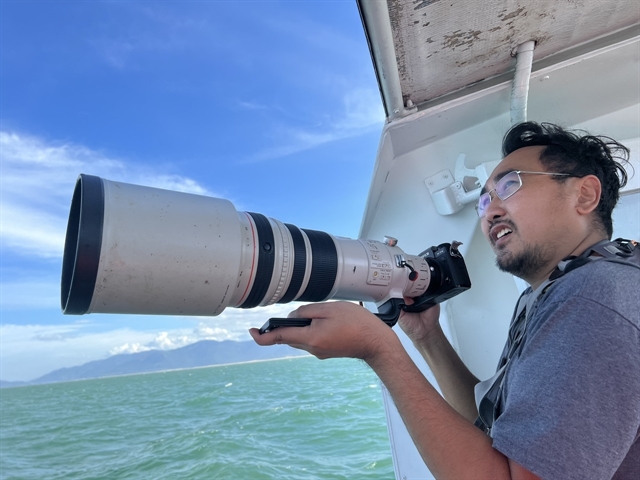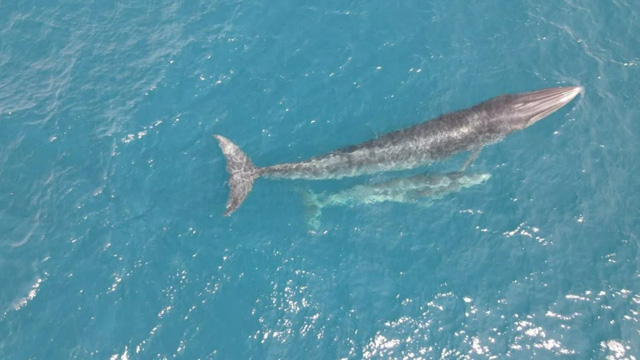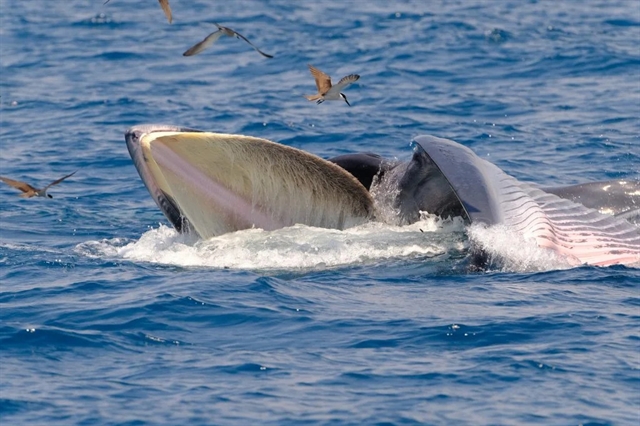 Opinion
Opinion

 |
| Vũ Long, a marine biologist and director of the Center for Biodiversity Conservation and Endangered Species (CBES). Photo courtesy of CBES |
The recent appearance of Bryde's whales in Đề Gi sea of the south-central province Bình Định has stirred public excitement, and many have proposed the idea of opening a whale watching tour, the first of its kind in Việt Nam. Vũ Long, a marine biologist and director of the Center for Biodiversity Conservation and Endangered Species (CBES) spoke with VTV News about this species and his opinions about whale watching tours
Could you share the results of your survey and research on the recent sighting of whales off the coast of Đề Gi beach?
Although the survey time was not long, we have gathered some interesting information about these whales. They are Bryde's whales and have the scientific name as Balaenoptera edeni. They live in tropical waters and are quite common in Southeast Asia’s seas, including in Việt Nam’s waters.
The whale mother and her child were recorded for the first time in Đề Gi on July 26 and they are still appearing now. This is a good sign as their appearance proves that the Đề Gi marine environment as well as the food source are quite suitable for whales in the rearing period.
Until now, scientists do not have much information about this species’ behavior. We know they live mainly in warm seas (about 16 degrees Celcius or more) and has been seen quite a lot in Thai waters.
This Bryde's whale is often confused with other whales such as the blue whale. There’s a way to tell between Bryde's whale and blue whale: Bryde's whale has three parallel ridges on the forehead while blue whales have only one.
Like all mammals, whale babies feed on mother's milk and breathe air. If the whales do not come to the water surface to breathe, they can suffocate.
 |
| The mother whale and her baby are seen swimming in waters off Đề Gi. — Photo courtesy of CBES |
In some sea areas of our country, dolphins and whales have been recorded with a regular frequency. Why is this?
Despite many people thinking to the contrary, dolphins and whales are actually quite common in Vietnamese waters. Up to now, our centre has recorded at least 26 species of dolphins and whales living in the waters of Việt Nam. They have lived in our waters for a long time.
In fact, Vietnamese fishermen meet and interact with whales and dolphins very often. Due to the long-standing interaction between fishermen and whales, the custom of worshipping this species is formed. The information of the whale’s appearance has been spreading widely because of the booming of social networks and mobile technology, causing curiosity to the public. But for scientists, this is not a rare phenomenon.
For many people, the appearance of whales is quite interesting. There are many debates on the proposal of opening whale watching tours. How do you evaluate this idea and do you think it is possible?
First of all, I have to admit that whale watching tours or other marine mammal tours are not new in the world. In neighboring countries such as Thailand, Indonesia or Australia, they have had this type of tourism activities. It is undeniable that it brings benefits to local communities, especially fishermen.
However, I think that it is necessary to have regulations on management suitable for this type of tourism. Tools are needed to secure the resources of the local community as well as to ensure an environment for this wildlife.
The case in Đề Gi is an example. We have seen hundreds of tourists joined the whale watching tour organised by local fishermen. Due to a shortage of knowledge about this species, many ships approached the whale at a very close distance.
This is a wild animal and she is in the breeding stage, so it is easy to have self-defence reactions. In addition, regularly approaching the whales so close will inadvertently cause stress for whales. Even though our water is a favourable habitat for the mother and baby whales, in the long run, it may go elsewhere. So, they lose their home and the local community loses a resource.
In Việt Nam, unfortunately, there are no regulations for whale watching activities. But we can refer to countries that have this form of activities. In the state of Queensland, Australia, passenger ships are required not to approach the head, the nose or the tail of the whale and maintain a safe distance of at least 100 metres away.
I think we should initially educate to raise awareness for local people and tourists about the issue, so that the whale mother and her baby will continue to live in Đề Gi waters and create a nature-friendly form of tourism.
 |
| Terns fly and forage around a whale. — Photo courtesy of CBES |
What difficulties and challenges are you dealing with in research and conservation of marine wildlife in Việt Nam?
Research conditions in the field of biodiversity in Việt Nam have many advantages and but also challenges as well. The biggest challenge when studying marine mammals, whales, dolphins, in my opinion, is the limited awareness of the majority of people about this group of marine animals.
Many people are often unaware that up to 26 species of dolphins and whales are living in our waters. When we do research projects, many think that dolphins and whales living in other seas migrate to Việt Nam and it costs nothing to conserve.
But most of the research in the sea requires expensive equipment and the funding for scientific research is limited. There are times when we have to make the right equipment ourselves, which takes a lot of time.
In the future, what topics will you and the CBES Center focus on in your marine wildlife conservation research?
My main research is marine mammals, which we have focussed on in the past five years. Currently, we have a dolphin research project in the Kiên Giang biosphere, a dolphin research project near the sea of Vũng Tàu and a research project on Dugong (Sea Bo) species near Côn Đảo Island. However, we focus on researching and conserving many species of wildlife on the short list in the Red Book in Việt Nam. Our approach is to try to apply new technology to scientific ecological research and conservation. — VNS




